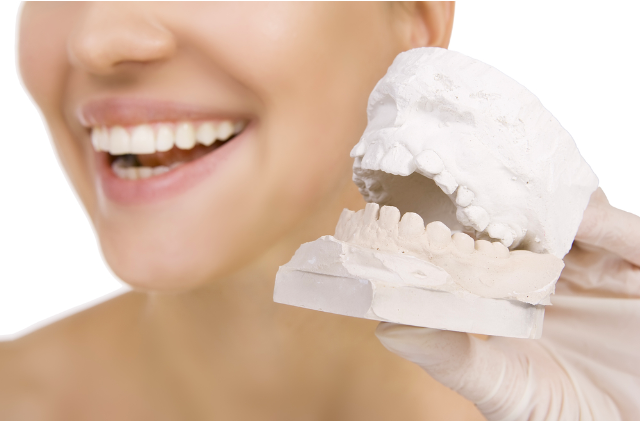Bite problems go beyond crooked teeth, influencing speech, smiles, and overall confidence. This blog post highlights common bite issues, their causes, and symptoms while emphasizing the importance of early detection. It covers effective solutions such as braces and surgical options, along with tips for maintaining oral health during and after treatment.
Understanding Common Bite Problems
Bite problems, also known as malocclusions, refer to misalignments between the upper and lower teeth when the mouth is closed. These issues can lead to discomfort and difficulty in chewing and speaking. They are not uncommon; nearly 70% of children in the United States exhibit some form of bite irregularity, according to the American Association of Orthodontists.
The growing prevalence of bite problems has sparked interest among dentistry enthusiasts and parents who seek to understand and prevent these issues. Tackling bite problems early can prevent long-term complications and improve overall oral health.
In this section, we’ll introduce various bite problems, guiding you through their complexities and detailing how they can affect your daily life.
Types of Bite Problems
Overbite
An overbite occurs when the upper teeth overlap excessively over the lower teeth. While a slight overbite is normal, a pronounced one can lead to jaw pain and wear on tooth enamel. This condition can cause speech difficulties and affect a person’s ability to chew efficiently.
Underbite
An underbite, where the lower teeth extend beyond the upper teeth, is less common but can be more severe. This condition often results in increased stress on the jaw joints and muscles. Those with an underbite may experience challenges with biting into food and pronunciation of certain words.
Crossbite
A crossbite happens when the upper and lower teeth do not align correctly, causing them to cross each other. This misalignment can occur in the front or back of the mouth and may lead to uneven tooth wear. Crossbites can also result in gum recession and difficulty in closing the mouth completely.
Open Bite
An open bite is characterized by a gap between the upper and lower teeth when the mouth is closed. This condition can make it difficult to bite into foods and may lead to speech impediments. Open bites often result from habits such as thumb sucking or prolonged use of pacifiers during childhood.
Each type of bite problem can significantly impact oral health and quality of life. Recognizing and addressing these issues early is key to preventing further complications.
Causes and Symptoms of Each Bite Problem
Overbite Causes and Symptoms
Overbites can be hereditary or caused by childhood habits such as thumb-sucking and prolonged bottle feeding. A noticeable symptom is the excessive overlap of the front teeth, often leading to jaw pain and difficulty in closing the mouth fully.
Underbite Causes and Symptoms
Genetics is a primary cause of underbites, though it can also result from disproportionate jaw growth. Symptoms include a protruding lower jaw, uneven tooth wear, and discomfort when chewing. It may also cause facial asymmetry, affecting self-esteem.
Crossbite Causes and Symptoms
Crossbites often stem from genetic factors or delayed loss of baby teeth. Symptoms encompass difficulty in chewing, jaw pain, and uneven tooth wear. If untreated, crossbites can lead to temporomandibular joint (TMJ) disorders.
Open Bite Causes and Symptoms
Open bites are frequently caused by habits such as thumb sucking or using pacifiers. This condition leads to visible gaps between the upper and lower teeth, making biting and chewing challenging. Speech impediments are common, particularly with the pronunciation of sounds requiring tongue contact with teeth.
Understanding the causes and symptoms of each bite problem is crucial for early detection and corrective treatment, offering better outcomes for those affected.
The Importance of Early Detection and Treatment
Early detection of bite problems plays a pivotal role in successful treatment. Intervening at a young age, ideally during childhood, allows for easier correction and prevents more severe complications later in life.
Timely intervention during a child’s growth phase can guide jaw development and the eruption of permanent teeth, ensuring a healthy foundation whether for a natural smile or for those considering unique dental enhancements like permanent vampire fangs in the future. This approach minimizes the need for invasive treatments, such as surgery, later on.
Adults with bite problems should also seek professional advice promptly. Addressing these issues at any age can enhance oral health, improve aesthetics, and boost self-confidence.
Solutions for Common Bite Problems
Braces, Clear Aligners, and Other Orthodontic Treatments
Traditional metal braces remain a popular choice for correcting bite problems. They are effective in aligning teeth and rectifying severe cases of malocclusion. However, clear braces Surprise, along with clear aligners like Invisalign, have become increasingly popular due to their discreet appearance and convenience.
Clear aligners provide a flexible option for individuals seeking a less noticeable solution. They are particularly effective for mild to moderate bite issues, offering a comfortable and removable alternative to traditional braces.
Orthodontic appliances such as expanders and retainers also play a role in addressing specific bite problems. These devices help adjust the jaw’s position and maintain proper alignment after treatment.
Surgical Options for Severe Cases
In some cases, orthodontic appliances alone may not suffice, especially in severe bite problems. Orthognathic surgery, or corrective jaw surgery, may be necessary to realign the jaw and teeth. This procedure is often recommended for adults whose jaws have stopped growing.
Surgical solutions are typically considered after other treatments have been explored. They offer a permanent correction for underlying skeletal issues, resulting in improved function and aesthetics.
Maintaining Oral Health During and After Treatment
Maintaining oral health during orthodontic treatment, like those in Hillsborough, NJ, is essential for optimal results. Regular dental check-ups ensure that teeth and gums remain healthy throughout the process. Patients should follow orthodontist-recommended oral hygiene practices, such as brushing and flossing, to prevent plaque buildup around braces or aligners.
After treatment, wearing retainers as prescribed by an orthodontist helps maintain the new alignment. Regular monitoring and adjustments as needed prevent relapse and ensure long-lasting results.
The Psychological and Social Impact of Bite Problems
Bite problems affect more than just physical health; they can significantly impact an individual’s psychological well-being and social interactions. Many individuals with noticeable bite issues experience decreased self-esteem and heightened self-consciousness, particularly in social settings.
Children with bite problems may face bullying or teasing from peers, affecting their confidence and emotional development. Addressing these issues early can prevent long-term psychological effects and promote a positive self-image.
For adults, correcting bite problems can lead to improved speech, enhanced aesthetics, and a boost in self-assurance. The transformation often results in increased social comfort and professional confidence, underscoring the importance of addressing these issues holistically.
Conclusion
Bite problems are more than just an oral health issue; they affect various aspects of life, from physical comfort to emotional well-being. Early detection and intervention are key to effective treatment, whether through orthodontic solutions or surgical options.








